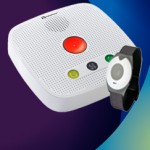How useful is repetitive shaking motion detection for epilepsy?

When you are
looking at the various solutions and apps available on the market that could
help manage your epilepsy or that of a loved one, it is important to have a
well-rounded understanding and appreciation of their benefits, but also their
limitations. This, in turn, will help you make the most informed choice of
product for your needs.
You may, for
example, have taken note of the Inspyre
assistive technology app. This solution works on the basis of tracking and
monitoring the movements of someone who uses it with a compatible device. It
also sends notifications in the event of unusual motion patterns being
detected.
A key aspect of
the Inspyre app is its repetitive
shaking motion alert functionality. This means that the app not only
identifies repetitive shaking motion, but also sends out alerts to loved ones
with a text message and call.
Repetitive
shaking detection can be a greatly useful feature
There are, of
course, many different monitors, alert devices, and apps on the market that
offer a repetitive shaking motion alert feature like the one Inspyre’s solution
offers. So, what we are about to say is generalised advice, instead of being
focused on any one product.
First, the good
news: given that repeated shaking movements may indeed indicate that the user
of a particular monitor or app is experiencing a seizure, this can be a
very useful feature to have in your chosen product. It can be especially useful
for the detection of not only tonic-clonic seizures, but also – provided that
there is sufficient movement involved – focal motor seizures.
If, then, the
user of the app or device is experiencing a seizure that causes them to make
big repeated movements, an associated repetitive shaking motion alert can
ensure that loved ones or caregivers are swiftly made aware of the situation
and can provide assistance.
There are,
however, certain limitations to these popular solutions
Here’s the big
downside to be aware of when you see any product being advertised as having a
repetitive shaking motion alert feature: this functionality, on its own,
cannot be depended on to detect all types of seizures. If the app or monitor
user’s seizures don’t involve big repeated movements, the device probably won’t
be triggered.
This gives you
all the more reason, if you are considering investing in such a monitor or app,
to carefully scrutinise the full list of functionalities that the given product
offers.
The Inspyre app,
for instance, captures wide-ranging data about the user’s movements and
activity, encompassing such aspects as the time, date, location, severity, and
duration of movements, as well as heart rate, and any symptoms that the user
reports.
So, as useful as
repetitive shaking motion alert functionality can be, Inspyre does not solely
rely on this in order to support the health, safety, and wellbeing of those
with epilepsy.
Would you like
to have a more in-depth conversation with our team at Epilepsy Solutions about
the various solutions available, so that you can be more confident about the
device or app you ultimately choose? If so, you are very welcome to reach
out to us for advice today.





